
APPLIED PHYSICS B-LASERS AND OPTICS
Scope & Guideline
Fostering Interdisciplinary Insights in Optics
Introduction
Aims and Scopes
- Laser Technology and Development:
Research on the design, optimization, and development of new laser systems, including solid-state lasers, semiconductor lasers, and fiber lasers, aimed at improving efficiency, output power, and operational stability. - Optical Phenomena and Effects:
Investigation into various optical phenomena such as nonlinear optics, light-matter interaction, and quantum optics, exploring the underlying principles and their implications for technology. - Photonics Applications:
Application-driven research that includes studies on imaging, sensing, and communication technologies that leverage optical systems for enhanced performance and new capabilities. - Spectroscopy and Diagnostics:
Utilization of laser-based techniques for spectroscopic analysis, including laser-induced breakdown spectroscopy (LIBS) and absorption spectroscopy, aimed at material characterization and environmental monitoring. - Quantum Technologies:
Exploration of quantum optics, quantum information, and related technologies, focusing on applications such as quantum computing, quantum communication, and quantum sensing. - Metasurfaces and Nanophotonics:
Research on the design and application of metasurfaces and nanostructured materials, which manipulate light at subwavelength scales, enabling novel optical devices and functionalities.
Trending and Emerging
- Quantum Optics and Information:
There is a notable increase in research related to quantum optics, including studies on quantum entanglement, quantum state manipulation, and applications in quantum computing and secure communication. - Laser-Based Environmental Sensing:
Research on the application of laser technologies for environmental monitoring and sensing has gained traction, focusing on gas detection and pollution monitoring using advanced spectroscopic techniques. - Nonlinear Optical Materials:
Emerging studies on nonlinear optical materials, particularly those that enable new functionalities such as frequency conversion and enhanced light-matter interactions, are becoming increasingly prominent. - Integrated Photonics and Nanophotonics:
There is a surge in research dedicated to integrated photonic devices and nanophotonic structures, which facilitate miniaturization and integration of optical components for advanced applications. - Terahertz Photonics:
An increasing number of studies are focusing on terahertz technology, exploring its potential applications in imaging, spectroscopy, and communication, as well as the development of terahertz sources and detectors.
Declining or Waning
- Traditional Laser Applications:
There has been a noticeable reduction in studies focusing on conventional laser applications, such as basic laser cutting and engraving processes, as the field moves towards more advanced and multifunctional applications. - Basic Laser Physics:
Research centered on fundamental laser physics principles, such as basic gain media studies without practical applications, has seen a decline, possibly due to a shift towards more applied and integrated research. - Static Optical Devices:
The interest in static optical devices, such as fixed optical filters and standard beam splitters, appears to be decreasing as the focus shifts towards dynamic and tunable optical systems that offer greater versatility. - Low-Temperature Laser Studies:
Research focused on low-temperature laser operations and their unique properties has become less prevalent, possibly due to a lack of new breakthroughs and the emergence of more practical high-temperature laser technologies.
Similar Journals

OPTICS AND SPECTROSCOPY
Advancing Knowledge in Atomic and Molecular PhysicsOptics and Spectroscopy is a pivotal peer-reviewed journal published by Pleiades Publishing Inc, focusing on the intricate fields of atomic and molecular physics, as well as optics. Established in 1972, and enjoying a legacy of convergence periods that reinforce its commitment to the evolving landscape of these scientific domains, the journal aims to disseminate high-quality research that advances our understanding of light-matter interactions, electronic materials, and spectroscopic techniques. Despite its current Q4 categorization in both the Atomic and Molecular Physics and Electronic, Optical and Magnetic Materials fields, with corresponding Scopus rankings reflecting its developing influence, the journal remains a valuable resource for researchers and professionals seeking to publish their findings, explore new methodologies, and connect with a community dedicated to innovation in optics. Although there is currently no open access option, the journal's expansive readership and its stability in publication over the decades make it an important platform for both established and emerging researchers in the field.
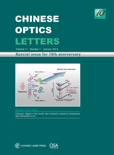
Chinese Optics Letters
Pioneering insights in the realm of optics.Chinese Optics Letters is a prestigious academic journal published by Chinese Laser Press, dedicated to advancing the fields of atomic and molecular physics, optics, as well as electrical and electronic engineering. Since its inception in 2003, this journal has become a significant platform for researchers and professionals to disseminate innovative findings and foster collaboration within these rapidly evolving disciplines. With a commendable Q2 ranking in leading categories including Atomic and Molecular Physics and Electronic, Optical and Magnetic Materials, it ranks favorably within the Scopus database, with notable positions in both engineering and materials science sectors. The journal is headquartered in Shanghai, China, and while additional open access options are not specified, it remains a vital resource for those committed to pushing the frontiers of optical research and applications. As we approach 2024, Chinese Optics Letters continues to play an essential role in shaping scholarly discourse and technological advancement in optics.
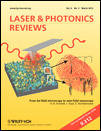
Laser & Photonics Reviews
Pioneering Insights in Atomic and Molecular PhysicsLaser & Photonics Reviews is a prestigious academic journal published by WILEY-V C H VERLAG GMBH, based in Germany. Since its inception in 2007, the journal has rapidly established itself as a leading outlet in the fields of Atomic and Molecular Physics, Condensed Matter Physics, and Electronic, Optical, and Magnetic Materials. With its impressive impact factor and presence in the Q1 category across multiple relevant disciplines, it ranks among the top-tier journals in its field—ranked #18 out of 434 in Condensed Matter Physics and #13 out of 224 in Atomic and Molecular Physics according to Scopus rankings. The journal emphasizes high-quality research that contributes significantly to theoretical and applied photonics, bridging gaps between fundamental science and practical applications. Although access is not open, it remains essential reading for researchers, professionals, and students eager to stay abreast of groundbreaking advances and applications in laser technology and photonics. For further information and to explore its compelling articles, please visit its official site.

OPTICAL REVIEW
Fostering Global Collaboration in Optical SciencesOPTICAL REVIEW is a distinguished journal published by the Optical Society of Japan that serves as a critical platform for researchers, professionals, and students within the diverse fields of atomic and molecular physics and optics. With its ISSN 1340-6000 and E-ISSN 1349-9432, the journal has had a significant impact on the dissemination of knowledge since its inception in 1994, with a planned coverage until 2024. Although it currently holds a Q4 ranking in the 2023 category quartiles and is positioned at rank #152 out of 224 in the Scopus database, its contributions are vital for advancing optical science. This journal provides a venue for innovative research, review articles, and significant developments that drive the optical sciences forward. Although not categorized as Open Access, it remains an important resource for those seeking to deepen their knowledge and engage with leading-edge research in optics. With its base located at the Kudan-Kita Building in the heart of Tokyo, Germany, OPTICAL REVIEW is poised to continue fostering scholarly communication and collaboration on a global scale.
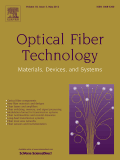
OPTICAL FIBER TECHNOLOGY
Illuminating Pathways in Optical and Electronic EngineeringOPTICAL FIBER TECHNOLOGY is a premier journal in the fields of atomic and molecular physics, optics, control and systems engineering, as well as electrical and electronic engineering, published by ELSEVIER SCIENCE INC. With an ISSN of 1068-5200 and E-ISSN 1095-9912, it offers a platform for disseminating cutting-edge research and developments in optical fiber technology and its applications. The journal has achieved a notable impact, ranking in the second quartile for multiple categories in 2023, including control and systems engineering and electronic, optical, and magnetic materials. By providing a robust avenue for peer-reviewed articles, OPTICAL FIBER TECHNOLOGY caters to a diverse audience of researchers, professionals, and students dedicated to advancing knowledge and innovation in optics and related fields. This respected journal is particularly suited for those seeking to stay updated on the latest technological advancements and research trends, ensuring its relevance in both academic and industrial contexts.
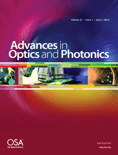
Advances in Optics and Photonics
Connecting Researchers in the Realm of LightAdvances in Optics and Photonics, published by the Optica Publishing Group, stands at the forefront of research dissemination in the fields of Atomic and Molecular Physics and Optics, alongside its prominence in Water Science and Technology. With an impressive Q1 ranking in both categories and a Scopus rank of #2/224, this journal boasts a 99th percentile status, underscoring its significance in the academic community. As a beacon of knowledge since its inception in 2009, the journal is dedicated to featuring cutting-edge research, innovative methodologies, and transformative applications in optics and photonics that can drive advancements across diverse scientific domains. While not an open-access journal, it provides vital insights for researchers, professionals, and students eager to stay updated on emerging trends and breakthroughs. With a convergence period extending to 2024, Advances in Optics and Photonics is positioned as an essential resource for anyone looking to explore the evolving landscape of light-based technologies.

JOURNAL OF RUSSIAN LASER RESEARCH
Advancing Knowledge in Atomic and Molecular PhysicsThe Journal of Russian Laser Research, published by Springer, stands as a vital resource for researchers and professionals in the fields of atomic and molecular physics, as well as optics and engineering. With its ISSN 1071-2836 and E-ISSN 1573-8760, this journal has been disseminating groundbreaking research since its inception in 1994, with a dedicated focus on the advancement of laser technologies and their applications. While it currently holds a Q4 classification in both Atomic and Molecular Physics and Engineering categories, its commitment to fostering novel insights and innovative methodologies positions it as a promising platform for emerging studies within these disciplines. Although the journal does not offer open access options, it continues to draw attention with a growing citation index. By publishing diverse research articles, reviews, and critical discussions, the Journal of Russian Laser Research not only enriches academic literature but also serves as a stepping stone for students and professionals seeking to deepen their understanding of laser science and its myriad applications.

OPTICAL AND QUANTUM ELECTRONICS
Transforming Knowledge in Electronic Engineering and OpticsOPTICAL AND QUANTUM ELECTRONICS, published by SPRINGER, is a premier journal dedicated to advancing the fields of atomic and molecular physics, optics, and electronic engineering. With an ISSN of 0306-8919 and an E-ISSN of 1572-817X, this journal has established itself as a vital resource for researchers, professionals, and students alike, contributing to the discourse from its inception in 1969 to its continued publications through 2024. It holds impressive rankings in Scopus, placing within the top percentiles for its categories, specifically in the 64th for Electrical and Electronic Engineering and 63rd for Atomic and Molecular Physics. Though it does not currently offer open access options, the journal's robust impact factor reflects its importance within its field, making it an essential reference point for cutting-edge research and developments in materials science and optics. Through its rigorous peer-review process, OPTICAL AND QUANTUM ELECTRONICS remains committed to publishing high-quality, influential studies that push the boundaries of innovation and understanding in these dynamic areas of science.

LASER PHYSICS
Illuminating the Future of Laser ScienceLASER PHYSICS is a premier academic journal published by IOP Publishing Ltd, dedicated to the exploration and advancement of fundamental and applied research in the fields of Atomic and Molecular Physics, Optics, Condensed Matter Physics, Industrial and Manufacturing Engineering, and Instrumentation. Since its inception in 1996, the journal has been a vital resource for researchers and professionals, contributing significantly to the collective understanding of laser technology and its applications. With a consistent Q3 ranking across several sub-disciplines in the 2023 categories, LASER PHYSICS is recognized for its rigorous peer-reviewed articles that push the boundaries of current knowledge. Although primarily subscription-based, the journal aims to disseminate high-quality research to enhance the scientific community's collaboration. As the journal continues to shape the future of laser science until 2024 and beyond, it stands as an essential platform for both emerging and established scholars seeking to publish innovative findings in this dynamic field.
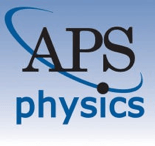
PHYSICAL REVIEW A
Illuminating the Path of Optical AdvancementsPHYSICAL REVIEW A, published by the American Physical Society, is a leading journal in the field of Atomic and Molecular Physics and Optics, boasting a Q1 category ranking in its area for 2023. With an ISSN of 2469-9926 and an E-ISSN of 2469-9934, this journal plays a pivotal role in disseminating high-quality research findings, theories, and methodologies that shape current understanding and advancements in the discipline. Although not an open-access journal, it remains highly accessible to professionals and academia through institutional subscriptions. The journal's impactful contributions are evident from its Scopus rank of #70 out of 224 in the field, placing it in the 68th percentile for scholarly impact. As a hub of innovative research and a vital resource for both students and seasoned researchers alike, PHYSICAL REVIEW A remains essential for those seeking to stay abreast of breakthroughs in atomic and molecular studies, as well as optics and photonics.